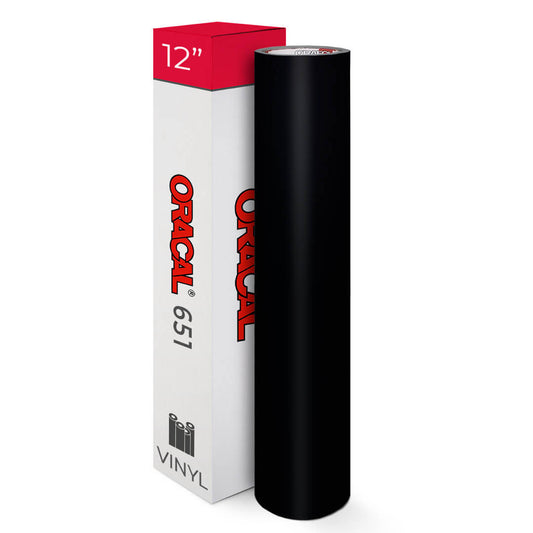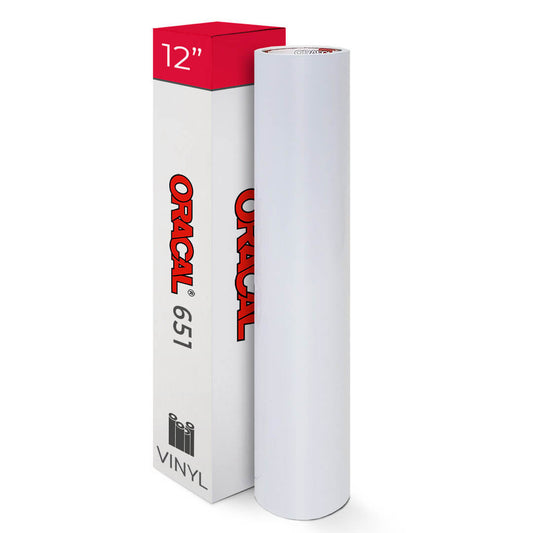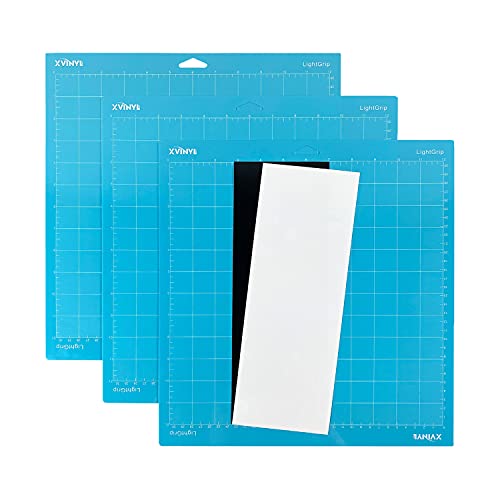A Work in Progress: HTV Application with an Iron
Super Friend! I was knocking in front of the door of your artistic mind a couple of times, and it seemed you didn't see me coming. Wait up… What's in the look? Staring blankly at your working table? Is that a sign of total concentration? Are your thoughts roving for another fantastic out-of-this-world HTV idea, or are you having difficulty pulling up your creative side? Alright... Still, you didn't notice me... I'll get closer to you with my super silent tip-toed walk, and I'll awaken your floating mind by startling you… Boooooooom!
ALAS! Finally, I got your attention. I could clearly understand what you're feeling right now. Are you considering beginning a project using Heat Transfer Vinyl, yet you don't have a heat press? Broken hot tools or no heat press at all?... Pick up those pieces of your broken heart, for we will not fail to mend that woe of yours. Here it is! A craft session's ace card--- IRON FOR HTV. Pull yourself up now. Let's witness how an Iron could be a significant game-changer in your design and HTV application.
Can you use an Iron for HTV?
It may sound like; a heat press is the only known way where your successful HTV venture roots. But what if you're just only starting? Would it mean that if you don't have a heat press, you can't make it possible?
You heard it loud and crisp; you can grab any Iron available in the comfort of your own home for the HTV application. As we test the water, remember that a great craft project always starts in a small crafty step. Iron is a helpful tool for beginning crafters and could function similarly to a heat press. Let's see what it can do for you and your project.
- Iron is convenient, which almost all of us have at home. It's easy to use, and it's compact.
- It's both practical and affordable often to beginning crafters for their heat transfer vinyl projects.
- Most Iron (even the household iron) heats up quickly and can reach a temperature of 400°F, which is hot enough for most HTV. Requirement accomplished!
Your tool and method are just one of your tickets for project accomplishments. If you want to make the impossible happen, your promising compassion and perseverance will fire up your powerful conviction. For a hobbyist like you, turn into a driven DIY crafter; another secret for a successful project is to know your material. Learn the process and create future results by heart. Let's learn more together by heart! Come…
What is Iron On Vinyl?
I know you're very excited to hear about the process of HTV application using an Iron. This time, let's build a seed of trust in your primary material because later, it'll play a significant role in adhering to design in your medium.
Mostly, beginner crafters who love to experiment on their decals always wonder about the mystery of HTV. This type of vinyl comes in different varieties, so sometimes people get confused even with the related terms.
Don't get tangled. HTV is easily connected with other types of vinyl. That's why sometimes we mistakenly think that it may be equally similar to others. Usually, HTV is associated with a vinyl called "Iron-on Paper," so we wrongly consider that both are alike. The difference is just a matter of words in its term ---- "Iron-on Vinyl" (HTV) and "Iron-on Paper."
To clarify, HTV is a vinyl with a plastic carrier sheet that requires heat and pressure to adhere and transfer the design to different mediums (ex., fabric, wood, mug, and so on) through Iron, heat press, or easy press. It's more durable and lasts longer. With that, HTV is equally known as "Iron-on vinyl." At the same time, Iron on Paper is "a special paper" used to transfer a design on fabrics utilizing heat and pressure. Oppositely, it cannot withstand wear and tear. In conclusion, the only similarity between these materials is the way it adheres to the medium; their difference is just operational.
Mystery unlocked! Indeed, all is well now, so you don't have any reservations about stepping into the next element of our today's session.
Learn It by Heart: General Steps in Applying Heat Transfer Vinyl with an Iron
As we go on to the process of HTV application using an Iron, this section talks about how HTV may be applied generally to a different medium. We provide standard steps to keep your mind focused on your tasks and the medium you are working.
Disclaimer:
Some Heat Transfer Vinyl has various settings under their heat-absorbing capacity and where they'll adhere. A standard HTV is typically employed with a "linen setting" in a hand iron equivalent to 445 °F. (Or "cotton setting," which equals 400 °F). Find and use an Iron with the evenest base, heftiest, and WITHOUT steam feature for the best Iron pressing. If your available Iron has holes on the bottom, move evenly as your press to ensure each part or your design receives equal heat and pressure.
Step 1: Workspace Ready for pressing HTV with an Iron
- Always check if your work area is free from clutter and if it's well ready for craft production. Use a flat, heat-resistant surface instead of an iron board that isn't suggested for pressing HTV. Avoid unnecessary materials that will unexpectedly touch or draw near your Iron and your medium.
Step 2: Preparing and Scaling Your Design
- Create your design using machine software.
- Measure your design proportional to the size of your medium's surface.
Step 3: Flip Your Design
- Mirroring ensures that your design is in the correct position upon application on the final surface and even when you start to cut and weed.
Step 4: Cutting Your Design
- You cut it by hand or use a cutting machine to make it easy and quick. Cut the backside (heat-sensitive adhesive side) of the Heat Transfer Vinyl while the transparent plastic sheet (the other side) will keep your design in place until it's applied to your surface.
Step 5: Weeding Your Design
- Remove any extra HTV around your design to prevent transferring unnecessary things to your final product.
Step 6: Priming and Pre-press
- In any HTV application, pre-heating helps discharge moisture on the surface of your medium (esp. for soft surfaces). It helps Iron to pre-level the temperature gradually according to your need upon the start of the application.
Note: If you stick your HTV on a soft surface, priming removes any wrinkles in your fabric that might cause negative adhesion. Pre-heating until your medium is free from any creases makes your application smooth on a dry surface.
- After, apply pre-press for about 5 to 10 seconds to avoid unwanted sticking of your decal. With pre-press, it signals you to start the entire adhesion process of your decal going to your medium.
Step 7: Iron
- Once you have prepared the design, transfer it to the desired position on the surface of your medium. Press and apply pressure for 10 to 20 seconds to each part of your design. Apply the heat and pressure according to the need of your material for its adhesive activation. Using an iron with less or no steam holes will give even heat and for heat protection, use parchment paper.
Note:
- A variety of HTV needs more or less heat, time, and pressure. Be sure to check the settings required for what type of vinyl you are using and what medium you are adhering to.
- Withstanding force upon applying pressure, a sturdy table or wooden cutting board is much better.
Step 8: Peel
- In peeling the carrier sheet, you have two options according to the type of HTV you use: Cold Peel (meaning the carrier sheet is totally cooled down before peeling) or Hot Peel (remove transfer paper while it's still hot).
- If some of your HTV did not adhere well, you might repress.
Grasping every step for the Heat Transfer Vinyl application helps you create a good friendship to pressure; temperature; and time for these three are the critical factors in a successful adhering process. To place extra TLC for your project, here below is a comprehensive guide for HTV Heat Setting with an Iron.
Heat Setting: Length of Pressing Time of HTV with an Iron
Note: For visual comparison, the table shows the heat requirement of HTV aligned with the heat volume and descriptor of an Iron. It enables the crafter to set an estimated setting required for the HTV since an Iron won't represent the exact temperature's measurement, unlike a heat press. Heat setting may vary according to the vinyl and medium used.
Best Shield for HTV Design: Parchment Paper for Iron-On Vinyl
Heat transfer using Iron can be delicate for your HTV. Some types of this are susceptible to heat, like the medium used in adhesion. We recommend using a cover sheet like parchment paper in any adhering process. Iron-on Vinyl (HTV) offers a layer of protection between the design and heat-sensitive mediums (like fabrics – where HTV is mostly attached) against the tool's hotness. It releases heat quickly; it's heat resistant and non-sticking. With this, we secure both materials from any damage.
What we learned a while ago is a perfect finish for your project! Let's put a more exciting twist that will give a fresh spin on your design.
Add Life to Your Decal: Layering HTV with Iron
Heat Transfer Vinyl isn't only for monotony and unicolor designs. HTV is like butterflies that could give your finish output a touch of transformation and brilliance.
Layering is a method showcasing the metamorphosis of your usual routine of HTV application. This process allows you to give dimension to your design and use various combinations of colors.
We can use most average varieties of HTV in layering. However, the exemption, not all types will do. Regular HTV (e.g. Smooth HTV, Metallic HTV) is used to be a bottom or based layer as your constant to secure surface where other vinyl is to adhere. It can be layered up to 4 layers. Meanwhile, HTVs like Glitter, Holographic, Flocked, and Foil are known as Specialty HTVs that function as a top layer that can only be layered over regular HTV.
Using regular and specialty HTV are your combinations (base layer plus top layer is equal to successful layering). We can't go on layering if your material is both glitter HTV or flocked over flocked because it might give an unwanted reaction over the heat application process. With that, a regular HTV base for specialty HTV can be layered up to 2 or 3 times.
It's how layering shouldn't be stressful anymore!
General Steps in Layering HTV using an Iron
Step 1: Set Your Base
- For beginners, start limiting your layers to 2 or 3 so you won't be overwhelmed by the process. The number of layers depends on your design and the combination.
Step 2: Design Preparation and Filling
- Create your design using a design studio available on your machine.
- After filling your layout, change each design color. Ensure your color combination is balanced or not psychedelic to the HTV you're using as you visualize the stance of your final design and start lining up your image.
Step 3: Mirroring and Cutting
- Stacking up helps mirror your design while resizing without losing proportion, even in the cutting process.
- Cutting will be accessible once you organize and group your cut file well (by color, size, and layer according to the HTV you're using) to identify every part quickly.
Step 4: Weeding
- Eliminate extra vinyl from the carrier sheet that is not part of your layout.
Step 5: Ironing
- To pre-heat, set your Iron between "cotton or linen setting." Gradually place the advisable temperature for the type of HTV you're using. In this, you can check the amount of heat desirable to apply to your final design—pre-press for about 2 to 5 seconds to create an initial bond.
- Next, press evenly for about 10 to 15 seconds, medium to firm pressure with an optimal temperature of 305 °F to 310 °F
- Remove the plastic, then apply the next part. Iron each layer, but start with the topmost layers. Note that the initial layers should not be given much heat because they'll still heat up when applying the following layers.
- Cover the design you had previously applied from the Iron with parchment paper to protect it. Repeat the process until you make all the layers.
Are you getting intimidated with layering and application? I know you have to remember the combination formula of layering and adhering details on HTV with an Iron. I hope you still find it simple. Don't worry; catch these tips and tricks for the best shield in your project and effort for emergencies.
Craft Hacks: Removing HTV with an Iron
You're not alone. We've been there also. Accidental or mistaken application of Heat Transfer Vinyl to your medium makes you think stars are not aligned for you. This isn't a game over for you! Even if you are patient or extra careful, this kind of situation is sometimes inevitable as it's part of the process. If this happens, the good news is that you can still save what you have started. Get ready to believe that mistakes can still be corrected.
Here's a humble way to eliminate undesirable HTV sticks on your medium and layered surface.
Removing HTV using Heat and Steam
Disclaimer: This technique only works with the Iron, not on a heat press. HTV removal with Iron was mostly entailed for designs adhered to a soft surface. In contrast, a different technique is applied for HTV removal on hard surfaces (mainly involves chemicals for removal).
Generally, set your Iron to its hottest temperature. If you're removing HTV on a soft surface, use appropriate settings to avoid melting in the decal and your medium (such as fabric or garment). Place the backside facing the Iron's hot surface. An alternative, using a steam iron, also helps come up with the HTV. Apply a wet towel over your design with the Iron's highest heat setting. When HTV comes off, gradually pull the chunks using a tweezer or X-acto knife. If peeling is a little bit challenging and the HTV doesn't shed that much, Goo Gone or petroleum jelly will help loosen up the extra residue of the vinyl.
Final jump-off! Watch out for these red flags, so you do not stumble on the way while proceeding to the run. We want to ensure you'll arrive safely at the finish line.
Signs of Unsuccessful HTV Application with Iron: Not Sticking and Wrinkling
HTV's Root Cause of Not Sticking
1. Using the wrong Iron - Irons with a steam feature is probably helpful when removing HTV rather than adhering. It releases minute molecules of water, making your decal not stick or won't add any effect to your material's grip. Equal pressure and heat aren't guaranteed for the hole in its base, causing you to miss a lot of spots in your adhering process. A heavy-weight dry iron, a total opposite, doesn't have holes in its base and can give much pressure and even heat distribution needed for pressing.
2. Distributing heat unevenly – Unfortunately, even if Iron is an excellent choice of tool, it never gets the three critical features that a heat press could always offer. Though it has a setting available, the exact temperature can't be sure and can't be locked up. A varying temperature distributed along the Iron's plate may get colder or hotter, compromising the design's grip. It may end up into tedious, mind-numbing work to complete.
Pro Tip! To catch an accurate measurement of heat released by your Iron, an affordable laser heat thermometer could help you do the readings.
1. An incompatible medium makes HTV won't adhere – Since HTV comes in a range of types, ensure it serves the purpose of your design, and to where medium you will adhere it. Even if how well you press to transfer vinyl, it'll give you an experience of real trouble for achieving the best results. Unsuitability plus mismatch HTV to your medium will only make your material an effect of ripping off, chipping away, and curling up. Therefore, misuse won't help save your supply, money, and effort.
2. Uneven surface – Lumps, bumps, or bulges prevent applying even pressure for proper adhering of HTV to your medium. A sturdy flat surface helps you stay even when working out the application process.
3. Forget Pre-heating – Pre-heating allows you to warm up the heat, first to your Iron and second to your medium. When heating an iron, it helps you prepare the heat that your HTV gradually needs until adjusting for the right temperature required for your decal and medium. For medium-like fabrics, it removes moisture between the surface that affects the proper adhesion of your HTV. Skipping pre-heating cause's unwanted amount of temperature applied to your material resulting in burning or warping.
4. Incorrect time for peeling – Patience is also applicable when waiting for your project to cool down. You need to understand that there are some HTV possible to peel off right after you Iron it, and some needs a full time to cool off before removing the plastic carrier sheet. Peeling the HTV at not so right time will wreck your design.
Reasons for HTV's wrinkling
The unexpected result happens when you're excited about your output's final look. Unwanted lines before or after the application erase your excitement. In any medium where your HTV will adhere with Iron, over-pressing and too high temperature both causes shrinking to your HTV creating stressed lines at the look of your output. Learning the basics of your HTV is your foundation, even if you know how well other HTVs works. Materials must be combined according to their function by distinguishing the HTV's proper properties, especially if you are layering. An incorrect combination will make your design pucker on your medium. Lastly, too early peeling up the plastic backing will make your HTV crumple.
This is it!
It's a sigh of relief for you, my super friend. Our artsy heart-to-heart talk brings peace back to you. HTV with an Iron truly fetches the life in your craft session. The impossible was made possible. A final word for today, whatever your tool or material, right time, temperature, and pressure are where successful HTV applications rely upon and are all about. It's a matter of trusting and being resourceful for your craft. Good job!
Cheers to this big celebration!... Till we meet again!
Learn more Vinyl tips and tricks and share your crafting adventures with us. Please visit us on our pages.
Social Media Accounts:
FB: CraftVinyl.ca
IG: CraftVinyl.ca
TikTok: craftvinyl.ca
For your vinyl crafting needs, please check our website at www.craftvinyl.ca. We offer different Adhesive and Heat Transfer Vinyl, perfect for your next project.

































